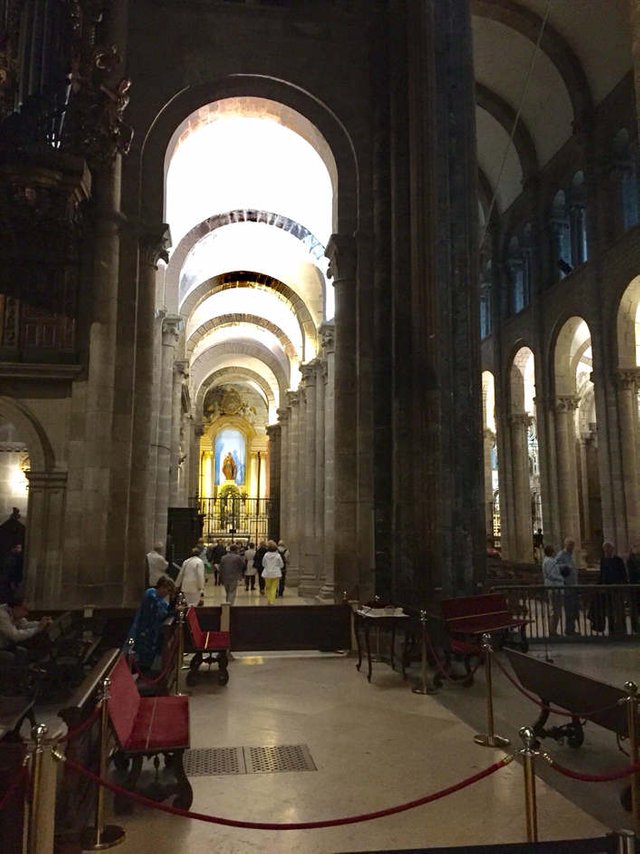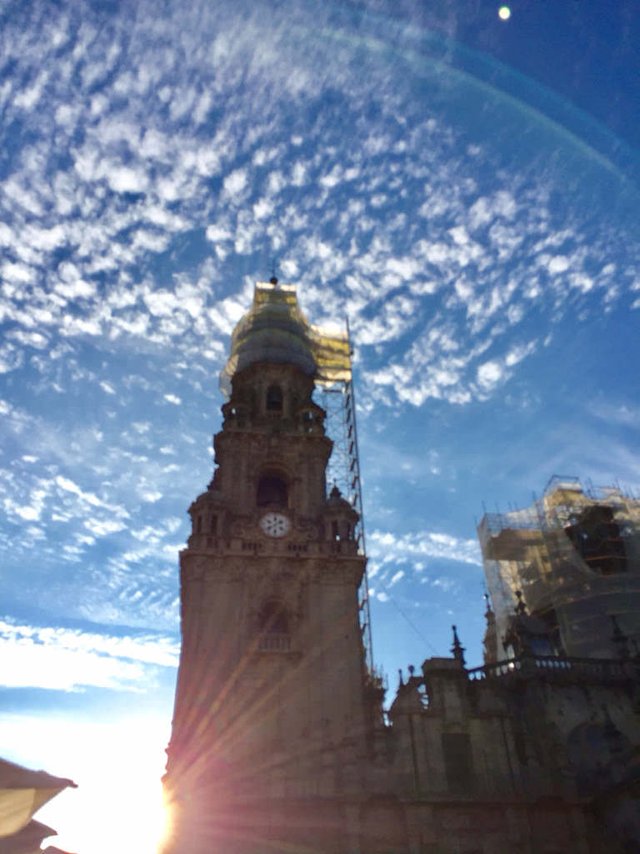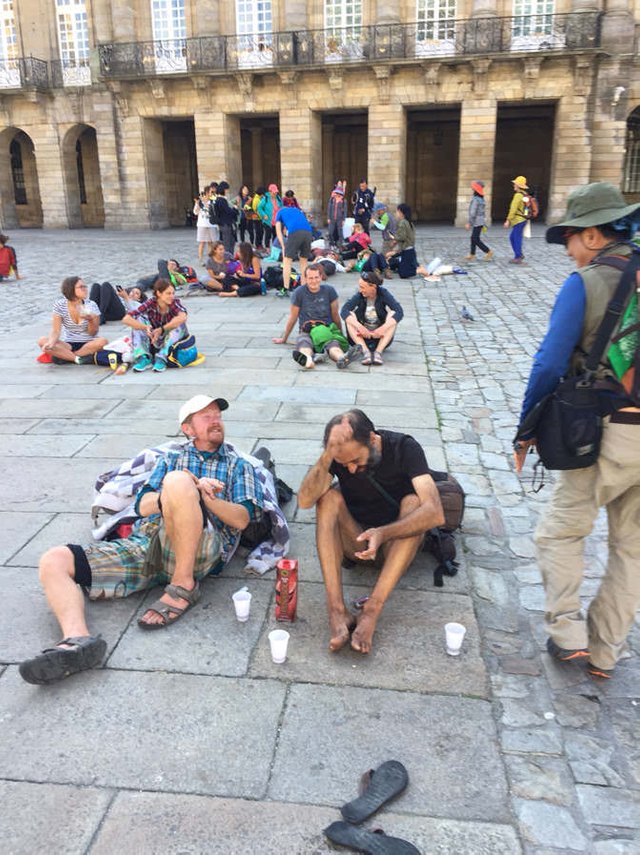

Yesterday I was writing about how this crowded crowd shocked me. No wonder about nature and loneliness. And that I don't want to look at so many old stones. In the late afternoon the cathedral was not so crowded anymore. She's bombastic. Is it bigger than St. Peter's Basilica? The crosshair seems to me to be as long as the nave. And everywhere there are chapels and rooms attached and chapel again. Behind the altar, filled with gold and cupidos and baroque angels with wings and columns, I also climbed up the narrow passageway behind James' bust (where do they know what he looked like?). You should put your arms in the chancel and caress the cloak of James. And then you have to throw your little sharpness into the prayer bench with a slit. Neither has been done, the coat of the poor man's coat is worn out. Slot to insert money can be found everywhere in the church. And under the altar, down a narrow staircase, in a cave-like drawer, the coffin. Solid silver, I suppose. His bones are supposed to be in there. The James'.
I was there again the next morning. For a long time I could spend in this masterpiece of architecture and building art, overcrowded with sculptures that amaze me.
The overloaded, overcrowded in some areas of the building makes me uncomfortable. But then again straightforwardness of the lines, the columns, the halls. It's just a mishmash of centuries-old building activity. For some time now they have been renovating extensively and from the outside the cathedral looks as if Christo, the packaging artist, had worked.
I could not admire the Portico de La Gloria. He disappeared completely under scaffolding and tarpaulins. I would have loved to stand where Friedemann recognized his Margrit. I looked at the portal on pictures (trigonart. com/3d-scan-q), it must be breathtaking, a magical place, says Margrit (that Friedemann, despite being amazed at this unique sculpture Margrit has seen, speaks for its uniqueness).

The same with the buildings and squares around. Amazing. Especially the Obradoiro has done it to me. Not only because the pilgrimage path ends in the middle of the square. The course, slightly asymmetrical, could also be located in Siena, has Italian charm. You can wander around in the narrow streets of the old town and meet churches and squares everywhere, inviting you to linger. Santiago, writes Margrit, is simply incredibly beautiful. Yes!
Despite all my amazement, my appreciation of such architectural and artistic achievement (also kitsch can be art) I can never prevent Brecht's questions of a reading worker from being present in my mind. Who built the seven-port Thebes? Who built the towering cathedral, who were the many nameless workers and artists? And who paid for all this?
I have one more comment to make. I see this approach as dualistic, as two sides of the same coin. It's not a yes-but. Yes, that's all well and good, BUT we think of the poor workers.... It's a "both - and". They are beautiful and admirable, the seven-port buildings, but they were NOT built by kings, rulers, bishops, sultans, who all needed a lot of ordinary people. Just us.
I'm on the bus. We've already crossed the border. The rain has stopped. It poured in Galicia. Heaven cried because I was leaving.